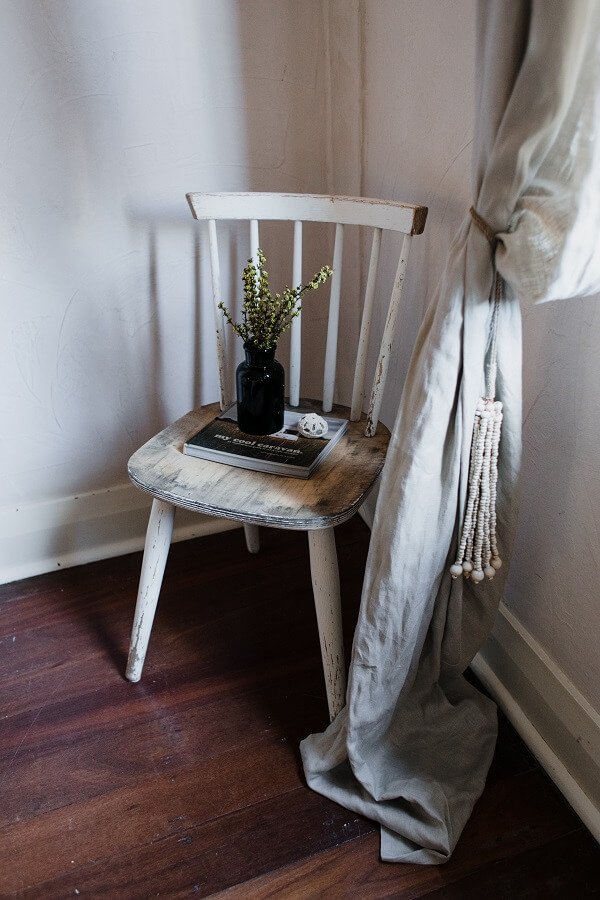One of the most basic furniture to date, the chair is considered as a crucial accent not only in one’s home, but in other places like office, restaurants, or should we say, everywhere!
It is the epitome of class and a status symbol of people from all walks of life. It is considered a throne in one’s own right. But if we dig deeper, a chair has rich history which dated back to Adam and Eve.
Chairs, as you have it in mind, have a long standing history, for as long as there has been individuals, there has been the need to sit down on something that is comfortable, or as comfortable as was affordable, available and most importantly, “allowable”. You might be wondering on why “allowable” – well, throughout its history, chairs have mirrored the status symbol of the person sitting on it.
Infographic courtesy of Tub Chairs
The decoration, size and sheer ornamental design of the chair talks a lot about an individual sitting on it. Indeed, during the early times of the pharaohs, the chair was destined for the mighty and high status. Meaning, only lords, bishops or kings were given the rare opportunity to sit on classy chairs, the rest of the community had to do with sitting on benches, stools, or chests.
The chair and the church have an even deeper link, as the term “chair” is derived from the Latin word “cathedra” which simply means the link between the church that was the seat of a bishop which is considered a cathedral. The chair however, goes further back than the Latin era. The Egyptians having come up with some extreme ornamental chairs for their rulers and pharaohs, while the Ancient Greeks dated back to 1400 BC were constructing chairs with four strong wooden legs. Their design and motifs are adopted by the Ancient Romans who introduced it in all the lands that they conquered.
Chairs evolved and were modified by intricate carvings and polychromatic surface treatments for the essential members of the community, but in the mid 1600s, chairs have been regarded as a common furniture and upholstery were then introduced.
During the mid 1700s, majority of chair designers and carpenters had come to agreement that the chair should not only look appealing, but should be actually comfortable to sit on as well. Hence, the chairs that were regarded as body hugger emerged. These chairs possess curved legs and bow shaped backs. The arm rests were padded and in some cases it was intricately embroidered and stitched, too. It was during this era that the “chaise lounge”, the forerunner of the sofa emerged, this being a type of chair on which a lady could somehow recline.
Chair has evolved into one of the most prominent furniture in the universe. The design has also developed throughout the ages.
The French Era also has an excellent contribution on the evolution of the history of the chair. The prime comfortable lightweight chairs being enhanced by French designers. Their efforts has given a notch of class of upholstered chairs, such as arm chairs, sleeping chairs, sofa beds, wing chairs, and chairs characterized by heights that is more comfortable to use aside from other chairs.
Meanwhile, In Victorian England, the legs of the chairs were designed in many concepts, as it was feared that they might resemble those of a women and such might awaken the senses. Over the years, the construction of chairs has changed drastically as well.
During the 18th century, before furniture has become a mass production for commercial and factory purposes, chairs were made as per details with even more curves as compared before. This creates a different level of beauty, a method that need considerable more types of material as compared to the curved sections, the backs and legs, being usually sawn out of solid wood in one piece.
Old and broken but still loved and used
The progress from turned and straight legs up to shapes like klismos and cabriole, and the enhancement of designs not needing stretchers, (there depending on other methods like corner blocks and knee blocks) can be followed as a logical timeline. This is where we reach the point where commercial pressure for continues innovation and development resulted in the rumble of revival styles that characterized in the 1800s.
of all the classes of furniture, the chair in fact showcases the greatest structural dilemmas, as they have to address the inherently weak portion of the construction of the chair. The joint between the back leg and the seat, an area which is specifically strained with the occupant tilts or leans backward. Imagine the challenge? So the humble chair do not only possess a rich history, it also is a structural work of beauty as well.
Basically, chairs are needed by everyone and for about just any occasion in any circumstance, but if they can be stackable and comfortable as well, then that is a notch higher. At this point, there are a lot of ergonomically designed chairs that suits the needs of every people. Chairs, indeed, are one of the best things that man has made. Long live the chair!
White washed used for deco and relax, a chair is always needed.
I am pretty sure that this will is not the end of its history. Tomorrow, there will always be geniuses who will modify and develop the chair into furniture that will be regarded as the best. For now, let us enjoy its benefits and let us “sit” and wait for the surprises that it might bring us in the near future.



